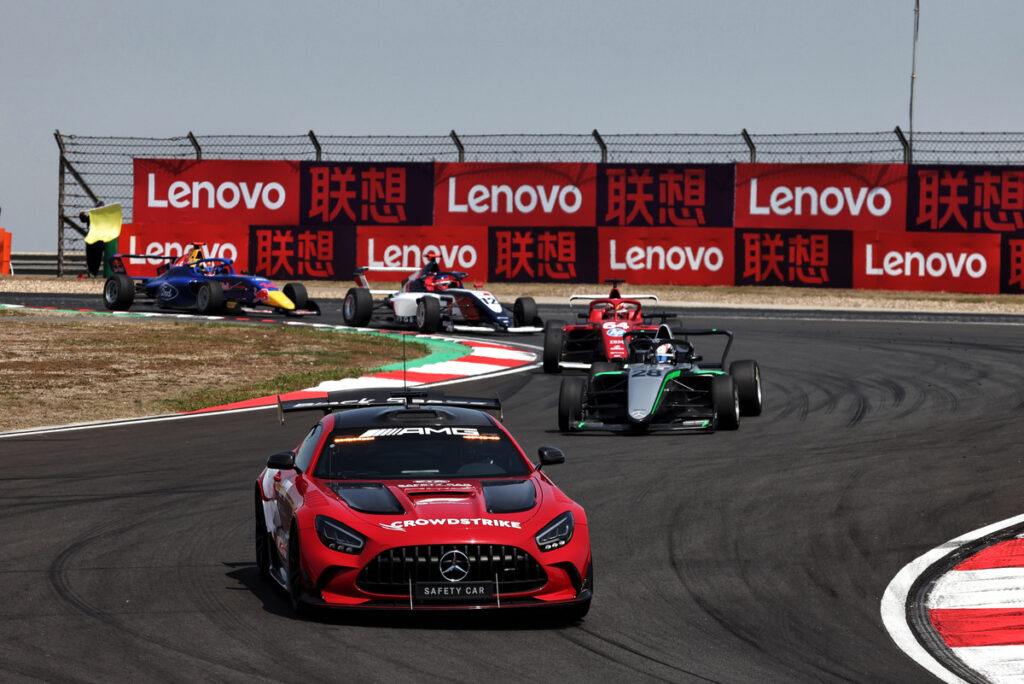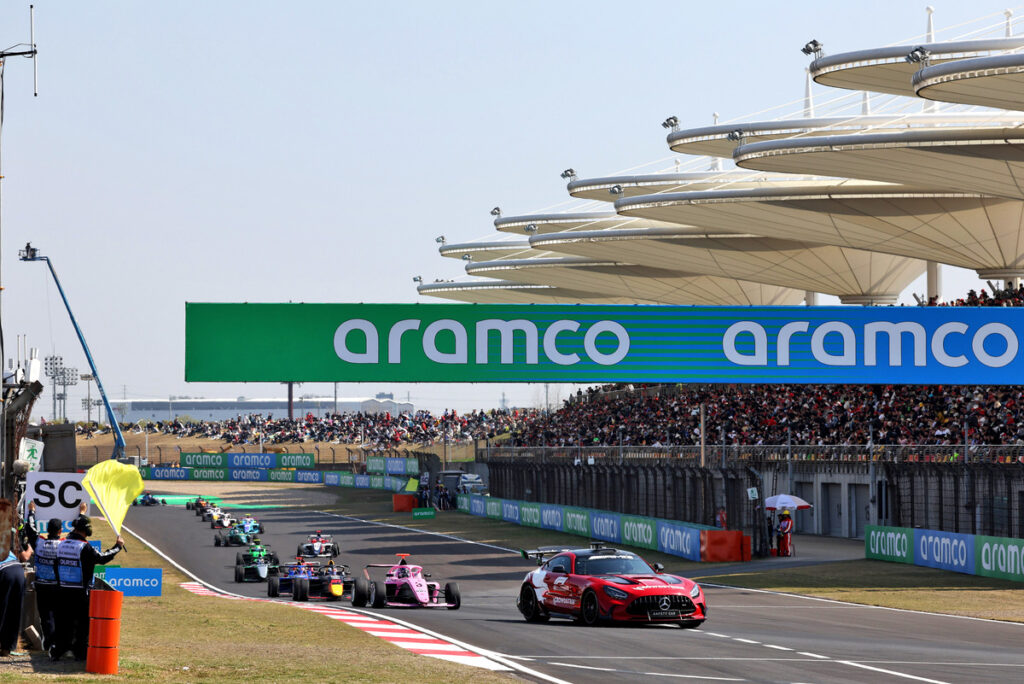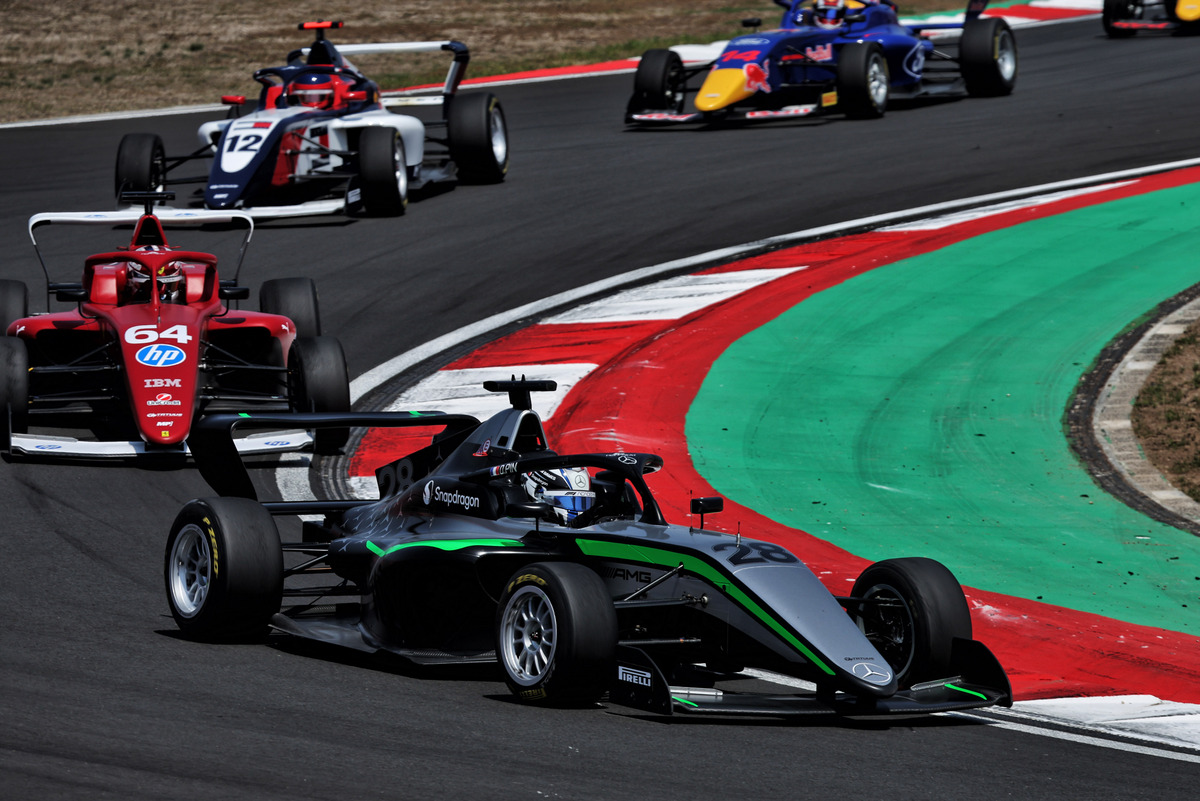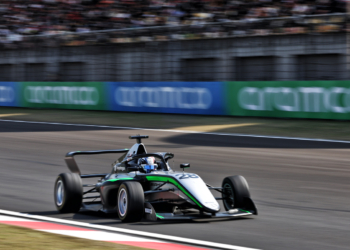The opening round of F1 Academy at the Shanghai International Circuit raised many questions about the functionality of the all-female racing series.
The third season of the feeder series kicked off in China with some key structural changes made on and off track from last season.
In China, we saw the introduction of a reverse grid race, a new team on the grid, and an altered points system.
A weekend full of safety cars worried fans who tuned into F1 Academy, forcing them to question the level of the feeder series.
Although the drivers were racing in particularly tricky conditions last weekend, there is still a glaring problem at hand.
The latest crop of drivers to enter F1 Academy include 16-year-olds who have just made the jump up from karting and racing competition winners.
Meanwhile, the more experienced drivers have separated themselves from the rest of the pack as the gap is rather large.

Is the age restriction in F1 Academy a plus or negative?
Drivers such as Doriane Pin possess a wealth of experience in motorsport, ranging from single-seaters to endurance racing.
The 21-year-old already held endurance and GT racing titles before entering single-seaters through F1 Academy.
On the other hand, new recruit Joanne Ciconte only made the jump to single-seaters last year through brief appearances in various F4 championships.
With this large experience margin, the racing becomes very predictable – it was the same reason Abbi Pulling pulled away with the lead.
It was not simply the fact that she was the fastest and smartest driver on the track, she was also one of the most experienced.
Pairing 16-year-old drivers who are just making the jump up from karting with rally sensations including Lia Block is a great display of the experience gap.
While F1 Academy is a fantastic platform to showcase the talent of young female drivers, it is equally restrictive as it is broad.
The restrictions come in the form of the age requirements and the maximum number of campaigns in the series.
Drivers are required to be aged 16-25 and are only allowed to compete in F1 Academy for two seasons.
A young driver like Alba Larsen will be most likely to complete her F1 Academy campaign before she turns 20 years old.
Although F1 Academy aims to propel these female drivers into different feeder series, pairing the fresh-faced karters with endurance champions may hinder the competition more than highlight it.
How does the experience gap affect rookies?
We can see the experience gap clearly on track, with the rookies struggling to keep their cars on track while the frontrunners sped off into the distance.
Race 1 on Saturday saw three full safety cars and the retirement of three drivers, while Race 2 on Sunday saw two more safety cars and the retirement of five drivers.
Opening lap incidents are a fairly standard practice in motorsport, especially in feeder series, but the experience gap has never been so clear than in F1 Academy.
On Sunday the first full lap of racing saw a four-car pile-up between rookie drivers, teammates, and last season’s race-winners.
Teammates Tina Hausmann and Nina Gademan made contact heading into Turn 3, taking out Joanne Ciconte, Aurelia Nobels, and Nicole Havrda in the process.
At the front of the pack, however, a clean battle for the victory was ensuing between Pin, Maya Weug, and Chloe Chambers.
The wealth of experience shared between the top three is nothing short of exemplary, which is why they are leading the standings.
So the problem lies in the midfield and further back. While these young drivers may be fast over one lap, they don’t have much experience racing wheel to wheel.

F1 Academy is far too broad in the sense that it hosts a wide range of drivers with varying experience, while other feeder series require similar experience levels.
Perhaps to prepare these young female drivers for different, more intense, feeder series, it may be more useful to split them into divisions.
In defence of F1 Academy, it has only been running for three full seasons and has already catapulted its drivers to FRECA, GB3, and more.
Whether the aim is to create strong and fierce competition, or to showcase and spotlight female talent, F1 Academy is succeeding on and off track.
No other feeder series has ever garnered this much support directly from Formula 1.
All ten Formula 1 teams nominate a driver to the F1 Academy grid, covering the costs of running the car.
This eliminates a huge barrier for young female drivers as it not only alleviates the financial burden of racing, but also brings a spotlight on them through massive fanbases.
F1 Academy is in its early stages, and while there may be a lot of questions to ask, there is no doubt that the backing and success is fully there.









